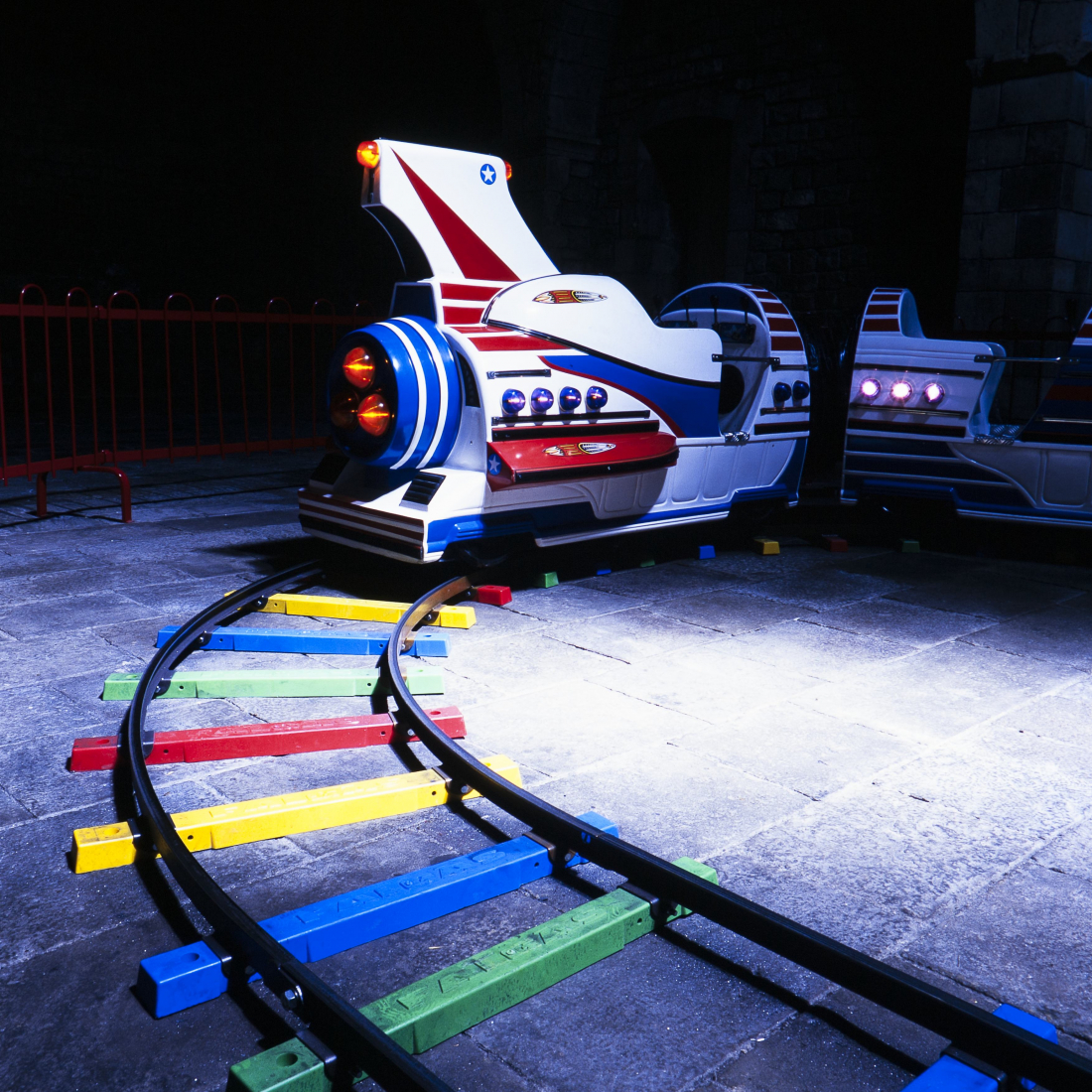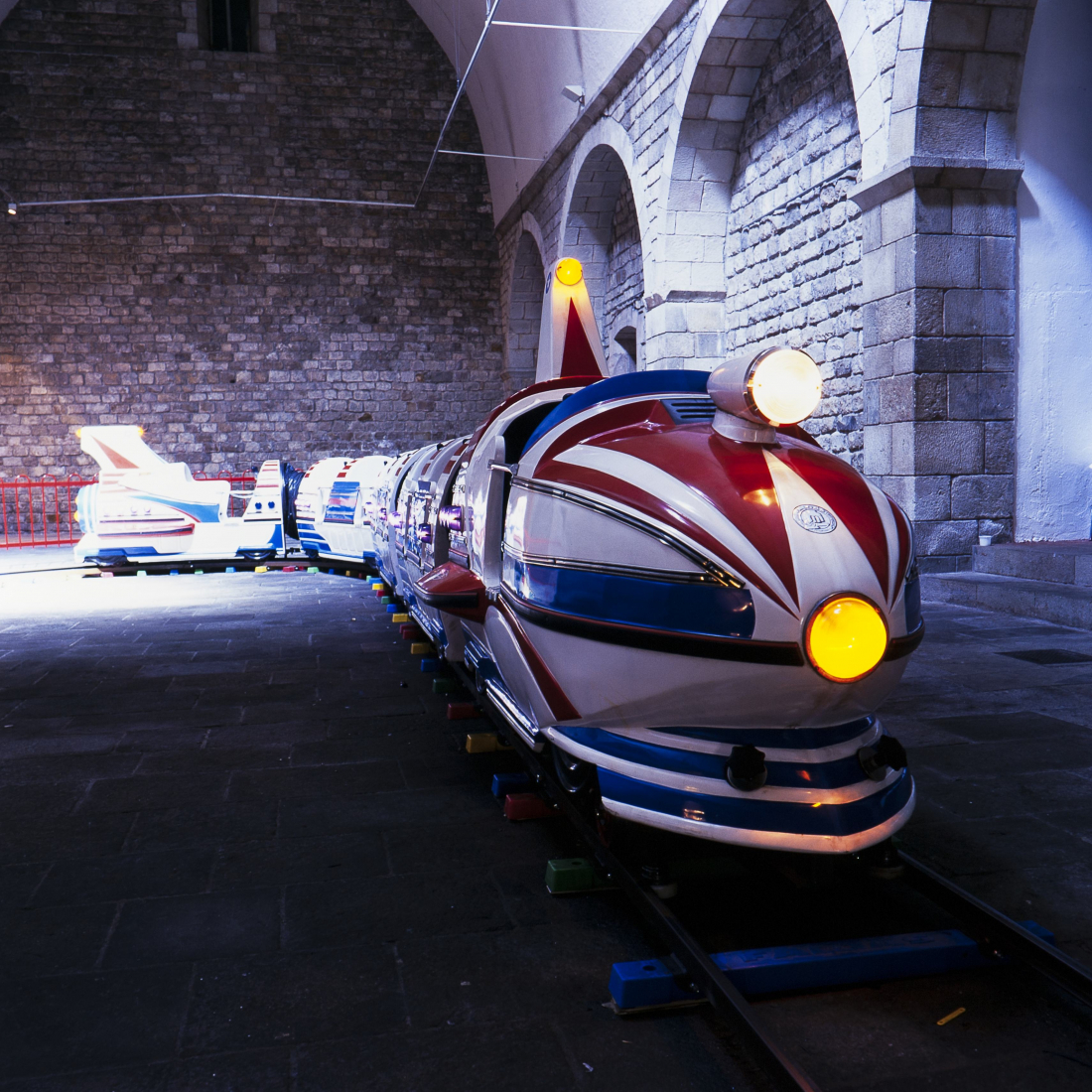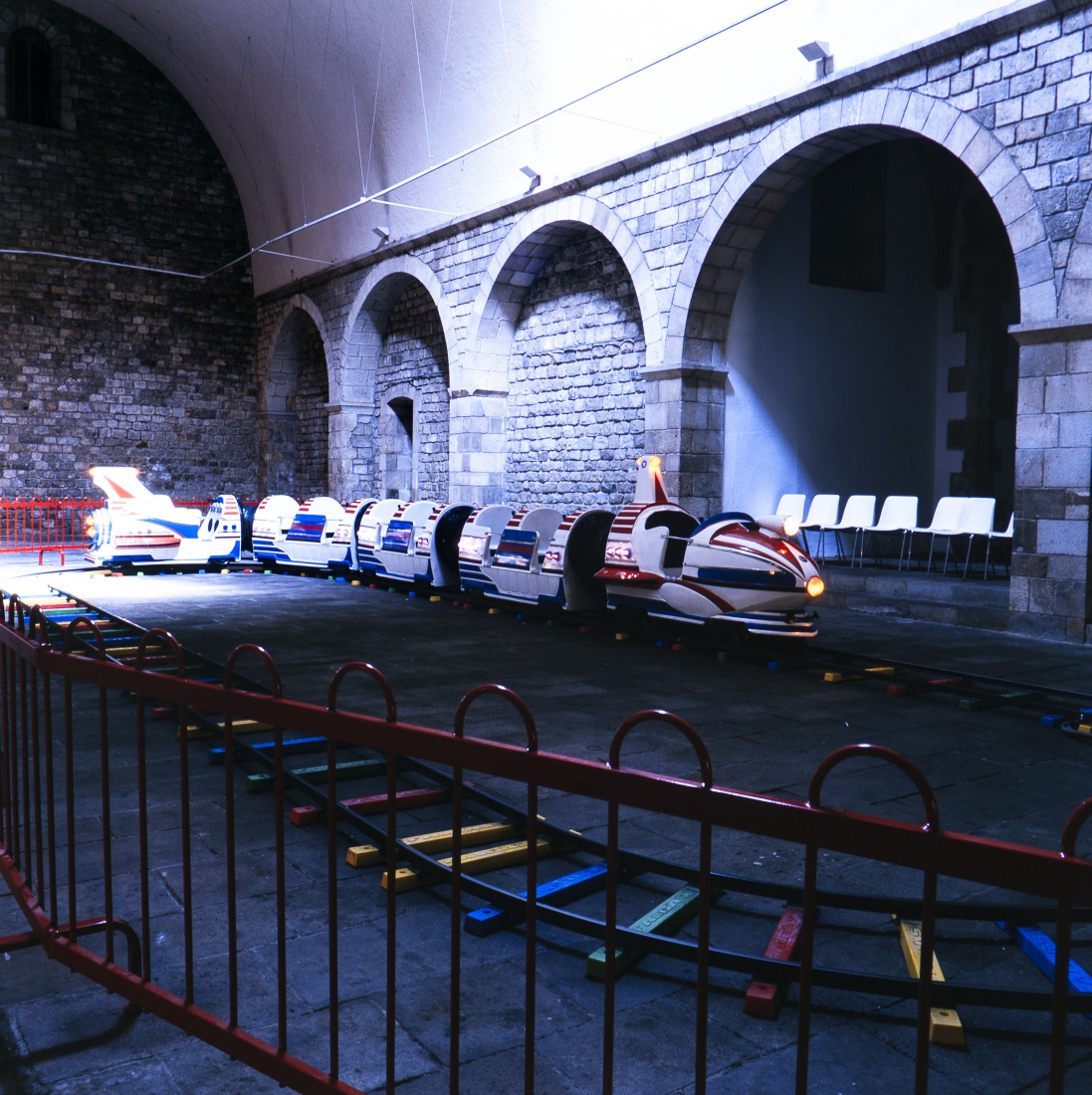Més alt
In Més alt (Higher), the installation of Mireya Masó, a fairground train with the shape of an rocket plane, circles the length and breadth of the space of La Capella. The likeness of this train to a space-ship, upon setting itself in the context of this medieval architecture constructed for worship, emulates the orbits of the planets, the trance movements of the dervishes or the ancestral action of Man in his ceremonies that imitate celestial movements to melt into (be with) the energy of the universe. But here once more technology occupies the place of the sacred, and an incisive commentary is made upon the state of spirituality. The imaginary celestial bodies that the post-industrial culture has constructed are, in Més alt, a universe of artificial celestial bodies, that substitutes the music of the stars for the sound of aeroplanes. Here the train has no destination. To emphasize the relationship with the semantic value of architecture, Masó allowed light to enter into the central dome of La Capella (usually kept dark) and made the train turn around the axis that marks this archetypal hole in the centre of the ceiling of the ancient temple. Thus, the space of La Capella recovers its original appearance and the allegorical value of the architecture increases with the restoration of the vertical position of the zenith-like light. Més alt is a solar work, designed for the month of June, the month of long days. The beam of light turns around the floor of La Capella and the train gravitates around it. The whole work is resumed in this change of context. The irruption of the fairground train, not manipulated, into the space of La Capella, names an imaginary group that in Més alt flowers in all its intensity. The train-object remains in an architecture that recovers its original appearance. For the founders of the modern architecture movement, the constructive elements of these medieval architectures linked between themselves with a strictly functional harmony. They would acquire (due to the quality of their structural relationships) the category of machines. Masó recuperates this aspect of the history of thought, but unveils the subjectivity of these constructions (machine and architecture) that was absent in the texts of these foundational speeches. The playful interactivity, open to the locals, that allows the presence of this fairground train in the Raval neighbourhood, filled the space with children.
Luisa Ortínez






